|
1/32 scale Hasegawa Fw
190A-8
Rauhbautz!
by Chris Wauchop
|
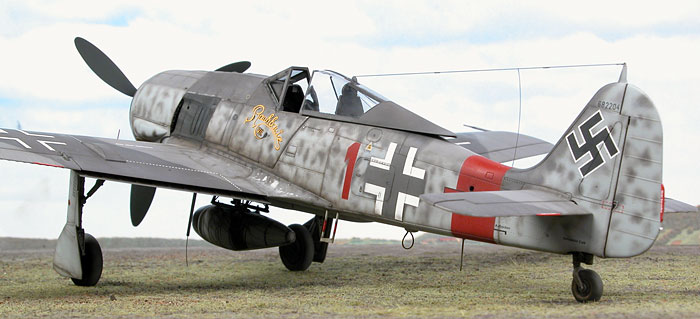 |
|
Focke-Wulf Fw 190A-8/R2
Rauhbautz VIII. 5./JG 300, Klaus Bretschneider |

Hasegawa's 1/32 scale Focke-Wulf Fw 190A-8 is available online from Squadron.com
Rauhbautz.
This means "tough guy" in German - definitely appropriate for a pilot
who agrees to ram his enemy if he cannot shoot him down!
Klaus Bretschneider's Red 1 of 5./JG 300 is a long-time favourite
aircraft of Chris Wauchop. Although he had just finished painting a 1/32
scale Hasegawa Wurger as a Sturmbock, his enthusiasm was
not dimmed. Next model off the rank would be Red 1 in 1/32 scale.
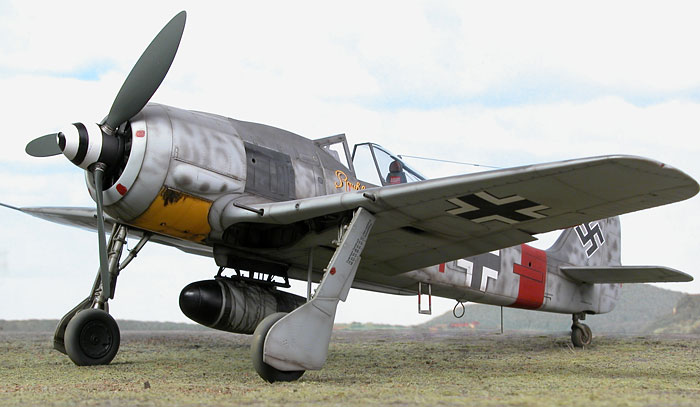
For specific details and photos of kit contents and basic
construction, check out our recent
Sturmbock Construction Feature.
Chris did not use any after-market conversions or
correction sets on this model. He did, however, make a significant
number of detail improvements during construction.
Before starting assembly, Chris added subtle rivet
detail to the fuselage and wings. On the fuselage, including the side
armour, Chris used a needle in a pin vise to individually drill each
rivet hole. He used a small Pounce Wheel to speed the process on the
larger wing surfaces.
With the surface suitably prepared, construction
commenced with the following additions:
-
Armour plates added to
fuselage sides using .020" plastic sheet. The armour plates were
bevelled on the edges in accordance with reference photos.
-
The cowl gun troughs on
this aircraft (and other Fw 190A-8/R8s) were faired over. Chris used
stretched sprue for the basic plug, then shaped the piece to fit by
sanding.

-
Ejector chutes opened on
lower wing for 30mm cartridges.
-
30mm gun barrels from
brass tube
-
20mm ejector chutes
closed on lower outer gun panels
-
The kit cockpit was used
as supplied, but a harness was added from lead foil (for the straps)
and wire (for buckles and attachment points). The gun sight
reflectors were replaced with clear acetate cut to size. The missing
section of instrument coaming crash-pad (behind the gunsight) was
filled with a short section of stretched sprue.
-
Canopy rail guides were
engraved with a scribing tool..
-
The drop tank was
replaced with the item from the 1/32 scale Bf 109G-6 kit. Plumbing
and locking pin details were added using brass wire.
-
Exhausts and gun barrels
were hollowed.
-
The gun camera port
in the leading edge of the port wing was enlarged and a lens was
added using Krystal Kleer and Tamiya Smoke acrylic paint.
-
Landing gear hydraulic
lines were added from fine wire and solder. Tiny actuator wiring is
stretched sprue. The landing gear indicators on top of the wings
were represented by fine brass wire.
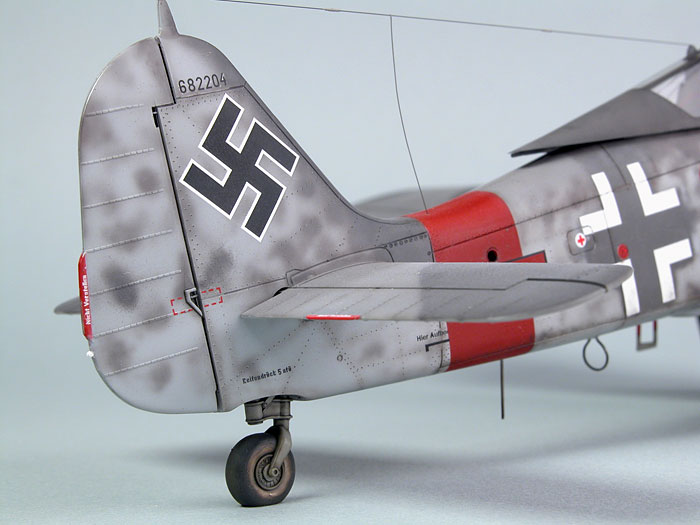
-
The metal section at the
end of the Morane mast was replaced with fine brass wire.
-
A staple from one of
Tamiya's clear plastic bags was used to form the DF loop.
-
Aerial was sourced from
smoke-coloured invisible mending thread. The isloators were built up
from drops of Krystal Kleer then painted.
-
A lens for the gun
camera was added using Krystal Kleer.
-
The flaps were modified
to reduce the angle of droop.
-
The tail wheel was
retracted slightly.
-
Prior to painting, Chris
spent some extra time cleaning up the join line between the upper
wing halves and the fuselage wing root.
Camouflage
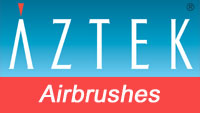 The
model was painted using the Testor Aztek A470 airbrush fitted with the
fine tan tip. The
model was painted using the Testor Aztek A470 airbrush fitted with the
fine tan tip.
Chris used Gunze acrylics - RLM 74, 75 and 76 - for the
camouflage colours. The RLM 75 was lightened slightly with white to
increase the contrast between the two upper surface shades.
Tamiya Flat Yellow acrylic, mixed with a drop of Gloss
Red, was sprayed on the lower cowl..
The armoured glass panels on the inside of the
windscreen were simulated by painting wide, dark grey frames on the
inside of the kit part. These were further emphasised by painting a fine
light grey line around the border of the frames on the outside of the
windscreen.
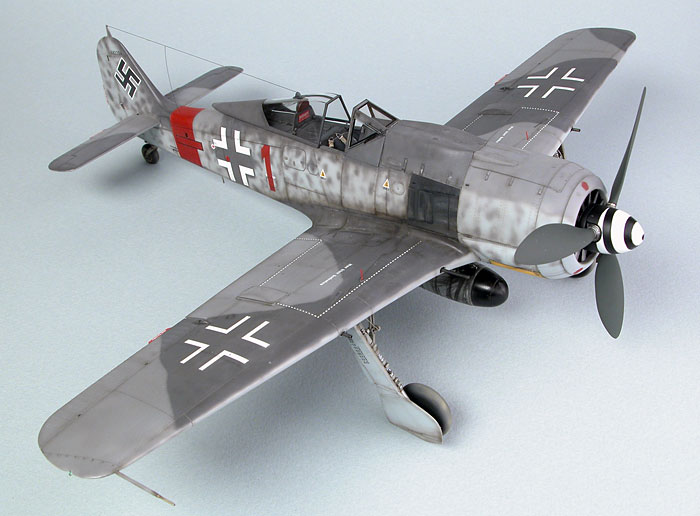
The front sun shield on the Revi gunsight was painted
Gunze Clear Green mixed with a drop of Gunze Clear Red to reduce the
bright tone.
Chris used his usual weathering techniques, including
post-shading panel lines with a thinly sprayed mix of Tamiya acrylic Red
Brown and Black. Wing walks, cowl panels and the canopy were also
"chipped" using the point of a silver artist's pencil.
Prior to applying decals, Chris polished the surface of
the model with a fine cloth. This removed some paint from the raised
lips of the rivet holes, adding subtle emphasis.
Markings
Eagle Strike Decals #32-061 was used for the markings.

Although references state that the colour of the
markings was a dull dark red, Chris thought that the decals looked a
little too dark and brownish. He cut a stencil to paint the
number 1 on the fuselage side, and repainted the horizontal II Gruppe
bar decal in the same colour.
A background of RLM 74 Grey Green was sprayed prior to
applying the fuselage crosses.
References were carefully consulted to ensure that many
interesting one-off stencil variations were accurately depicted on the
model.
The spinner spiral was
masked and sprayed. The white section of the spinner is noticeably wider
than the black base colour.
Click the
thumbnails below to view larger images:
Focke-Wulf Fw 190
Modelling Manuals 20 |
|
|
|
|
US Price: $17.95
UK Price: £12.99
Publisher:
Osprey Publishing
Publish Date:
May 25, 2002
Details: 64 pages; ISBN: 1841762687 |
|
|
Model by Chris Wauchop
Text Copyright © 2004 by
Chris Wauchop &
Brett Green
Images Copyright © 2004 by
Brett Green
Page Created 23 October, 2004
Last Updated
26 October, 2004
Back to
HyperScale Main Page |
Home
| What's New |
Features |
Gallery |
Reviews |
Reference |
Forum |
Search